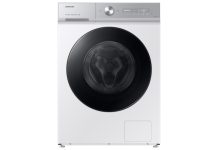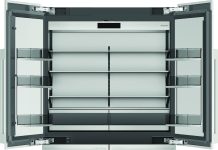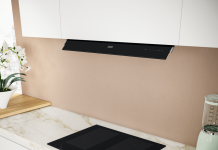The range of electronic components for which the three-dimensional X-ray control can provide important information is wide. This inspection technology allows an efficacious analysis of multilayer boards, as well as of TH components, such as both welded and press fit connectors.
Over the years, the X-ray inspection of PCBAs has seen the introduction of increasingly complex systems, able to perform the tomosynthesis of boards, succeeding in providing detailed information less subjected to the typical disturbances of the first 2D approaches, which actually carried out a board radiography.
Through the motion of source and detector, they can focus a specific plan and, by acquiring images from different perspectives, they can insulate the parts placed on different focus plans. Even if they feature some advantages in comparison with 2D, they cannot compensate the missing planarity of the board and they can inspect a limited number of plans.
The computerized tomography adds a further benefit because it collects a bigger number of images and information that, through sophisticated algorithms, uses for the three-dimensional reconstruction of the objects under investigation.
The computerized tomography allows performing a real separation of the two sides of the board, cancelling the mutual disturbance caused by their overlapping, and it becomes possible to inspect in detail components place one above the other, such as PoP (Package-on-Package). Moreover, this technology permits to compensate efficiently and automatically for boards’ planarity problems, identifying with precision the position of each even small portion of the component.

How an X-ray system operates
Like in all inspection systems, the process starts with the entry of the PCBA into the machine, a camera reads the fiducials to correct the offsets in X and Y, while with a laser sensor some points are read on the Z-axis, to map the board’s planarity.
For the acquisition of views, both the x-ray source (or emitter tube) located under the PCBA, and the detector positioned in the upper parts are rotated by 360 degrees in opposite direction. The duration of the acquisition depends on the number of views we want to acquire, a number that influences the reconstruction resolution. The total acquisition time for each FOV (field of view) is linked with the acquired details. The smaller and more complex they are, the more images they will need to capture and the longer it will take.
An Xray 3D inspection system no longer considers a bidimensional image (positioned on a single plan), but it reconstructs objects in their three-dimensional nature.
In the ambit of the bidimensional vision it works on pixels, term that derives from the union of pix (picture or image) and of el (element); pixels are elementary bidimensional units. Working in the three-dimensional domain, which is volumetric, this concept loses value in favour of voxels, from vo (volume) and from xel (pixel). This is the three-dimensional elementary unit whose size is chosen according to the object to be inspected, starting from microns.

Operation principle and characteristics
The principle of the Xray inspection is based on the different absorption of X-rays by different materials, but also according to different thicknesses; therefore, the detector’s ability of distinguishing the various resulting intensities influences results. Important is also the acquisition speed, because for each single field of view the system is expected to be able to acquire from dozens to hundreds of views. The detector is the active element most exposed to the constant presence of X rays, therefore it must be reliable in the long term.
The source of X rays is an important element of the system, too, because the capability of penetrating materials, and then of investigating, depends on its power and on the capability of dosing it finely.
Another fundamental characteristic to the ends of the image quality is the size of the X-ray beam emitted by the tube, the “spot size”, the smaller it is the more defined is the image projected on the detector.
The detector is the digital element that collects the X-rays that have crossed the target (the item under investigation), and reconstructs its bidimensional images as if it was a radiographic plate. Its resolution determines the image quality.
The speed of mechanical motion, the precision and the absence of vibrations on optics are crucial features to the ends of the image quality and of the inspection speed. Due to the modern manufacturing technology of the electromechanical part, we are not compelled to stop the motion of the tube and of the detector before acquiring the single images; their acquisition takes place without interruption along the 360° of rotation needed for the 3D reconstruction.
The motion system works in collaboration with a PLC entrusted with the execution of the automation control managing the whole motion part (servomotors, sensors and actuators) while the on-board computer takes care of the image processing, from the acquisition of data coming from the camera and the detector to the management of the entire part of image processing.
All data concerning tests are filed in a central database, at disposal of the MES interface to which sending traceability data, inspection statistics and eventually the information for the repair station.

Operational remarks
The absorption of X-rays by whatever material causes some modifications to its atomic structure, also electronic components are exposed to this effect and their features and functions might be altered by an excessive exposure to X-rays.
However, it is also true that, due to the discrete exposure levels, each alteration is absolutely negligible for the vast majority of components, to the extent that no specific directives or limits imposed for the different families exist by component manufacturers. However, there are some components, like memories, potentially more sensitive to such effect, which might alter their characteristics.
The eventual damages the material might undergo are of cumulative kind, this means the repeated exposure to different processes that use X-rays sums the effects one another. We must take this into account owing to the various steps in which a component is exposed to the radiation: the testing during its production, the calculation systems of components when they are received in the company, the inspection of the assembled boards.
The quantity of radiations absorbed during an exposure varies with the magnification; since radiation is inversely proportional to the square of the distance, more zooming results in a higher radiation.
An automatic inspection system allows using not excessively exaggerated magnification and resolution values, even assuring good repeatability and a good capability of detecting errors with short exposure times. This means that it allows exposing boards to a lower quantity of radiation compared to a non-automatic system, for which the duration of radiations’ emission phase is by far longer.
To full benefit of the process traceability, a modern X-ray system registers with precision the radiation to which each board is subjected.

Programming
X-ray systems are conceived with the precise goal of inspecting all that is not visible.
Their programming makes available very sophisticated software environments, which allow benefitting from all data collected in simple and intuitive manner. Once registered the component, it is sufficient to activate test logics that take care of carrying out analyses directly on the volumes drawn from the computerized tomography.
The sequence of actions starts with the acquisition of a complete board image from both sides, followed by the registration of fiducials, the activation of inspection logics and finally by the debug of the inspection programme. Programming software use libraries to file the various components and to make them already available for the successive programmes.
Programming software allow creating the programme for components in user-friendly manner. In the programming of a BGA, for instance, two diametrically opposed angles of the component are identified, then the wished resolution is selected and the self-learning is launched, so that the system extracts the “balls” automatically. Finally, inspection logics are applied and thresholds are fixed to avoid fake calls. Results are shown on the video under both the numerical and graphic form; this immediately clarifies what the system is measuring and in what area of the component it is operating.
The system is provided with various parameters concerning the image acquisition, including the optical resolution, which identifies the size of voxels, the number of images acquired (the more numerous images are collected, the more detailed is the reconstruction), the tube bending versus the detector, current and voltage of the tube, exposure time of the detector.
These parameters influence the data quality and the inspection cycle time; they allow maximising the system performances and achieving a good balancing between cycle time and measurement reliability.
The detector is the only active element exposed to X-rays. Being a fundamental component to the ends of inspection speed, precision and reliability, automatic systems can execute the self-calibration.
The calibration can, for each single pixel, compensate the decay of the detector that in time implies an alteration of its sensitivity, even annulling it completely. When a pixel is no longer in operation, software strategies are provided for making up for its lack, processing the signal coming from adjacent ones. This stratagem allows a quite long service life of the sensor, keeping the performances of the inspection system constant.



